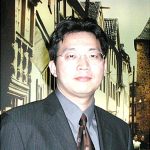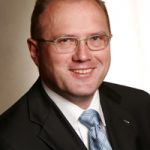The Riverside, California-based Bourns Inc, manufactures a broad range of electronic components, such as potentiometers, power protection devices, sensors, resistors, switches, encoders, panel controls, dials, and chip resistor arrays. The company sells to the automotive, computer, portable electronics, medical, industrial and telecommunications markets. Established in 1947, Bourns is a family run business which today, has a presence across the world.
Bourns’ automotive division makes a range of products from circuit protection devices to steering angle sensors. The division specializes in providing innovative position-sensing solutions to the automotive market. According to the company, Bourns Sensors GmbH, the European unit of Bourns automotive division, has played a leading role in the design, development and manufacture of potentiometer sensors since 1949.
Bourns’ automotive division operates in two strategic business areas – passenger vehicle and commercial vehicle position sensing. The sensor design is customized to the specific environmental considerations for each target market. Bourns employs more than 4,500 people around the world, and its products are sold in 125 countries worldwide. “Our research and development work combined with close collaboration with customers help to ensure that our products meet the highest standards set for the automotive industry. Using state-of-the-art development software and world-class production methods, Bourns can provide innovative and cost-effective solutions for your applications,†says the company.
Some of the innovations from Bourns’ Munich-based engineering team include a potentiometer with a 200°C and 50 million cycle capability specifically intended for high temperature turbo and EGR applications. In the area of non-contacting sensing, Bourns has solutions based on HE, 2 Axis HE or AMR technology. Bourns continues to develop and produce new technology sensors, either contacting or non-contacting sensors, which make vehicles safer, more fuel efficient, and more comfortable.
Bourns says that some of the non-contacting product highlights include the ability to offer one of the few self-diagnostic, multi-turn steering sensors on the market for EPAS and which is ready for active steering duty. To complement this product a non-contacting torque sensor, already produced in quantities of several million, is available for torque assisted electronic steering applications. “Bourns see a future where the steering sensing products are combined with the wheel speed sensors to provide input for electronic vehicle stability control. Further enhancement of such a system would be available by interfacing the input from Bourns various suspension, throttle valve and pedal sensors to create a true closed loop system,†says a statement on the company website.
Bourns focus areas include steering, suspension, braking, power-train and under-bonnet sensing. The company predicts that it will benefit from legislation regulating X-by-wire applications and vehicle stability control implementation. Bourns’ automotive division was created early last year by combing the capabilities of Bourns Inc. Automotive products, RUF GmbH and SSI Technologies Inc.
In 2006, Bourns acquired the SSI Technologies’ automotive division. From the acquisition, Bourns added SSI’s electric power steering, torque and position sensors and rotational speed sensors for ABS and electronic transmission applications to their broad portfolio of products.
During the same year, Bourns acquired the principal assets of the Polymer PTC division of Therm-O-Disc, Inc. (T-O-D), including equipment, intellectual property and backlog. T-O-D is headquartered in Mansfield, OH, with additional manufacturing in Shenzhen, China. T-O-D had earned a solid reputation for the design and manufacture of polymer PTC devices for the protection of DC-motors, particularly for automotive applications.
Bourns was already a leading supplier of circuit protection solutions with an outstanding reputation for the design and supply of technology-leading polymer PTCs for a variety of applications. T-O-D acquisition expanded the Bourns existing Multifuse® Polymer PTC product line manufactured in the Bourns’ TS16949 certified facility in Xiamen, China. Bourns transferred the acquired production lines of T-O-D to the Bourns plant in Xiamen.
“We are very excited about this acquisition. T-O-D has enjoyed excellent print positions with many well established DC-motor manufacturers. Bourns will now be able to combine this strength with its previously launched high temperature PTC material, which is so highly desired in automotive applications, to strengthen Bourns’ position as a leading PTC solutions provider,†said Dr. Erik Meijer, vice president of Bourns Circuit Protection, during the acquisition.
For Bourns, which initially started out manufacturing a miniature linear motion and vane position potentiometer for pilots in a 384 square-foot garage in Altadena, California, the last 60 years of its existence have been a period of immense growth. Automotive Industries caught up with Jeffrey A. Pyle, managing director of Bourns Sensors.
AI: What are the strengths of Bourns Sensor GmbH that make it a leader in supplying sensors to the automotive industry?
Bourns offers a variety of technologies to meet the needs of our customers in the markets where we elect to participate. We are very focused in certain applications. We offer complete sensors for high temperature, extremely long life contacting applications or we may offer key components to customers for these applications. We also offer one of the most accurate steering position sensors in the automotive industry. These SPSs are used in vehicle stability systems, where we also provide speed and torque sensors.
Our goal is to provide the complete sensing solutions to our customers. We will be flexible with our sensor designs to meet the needs of the end user. Bourns will manufacture our products in North America, Europe, or Asia, depending on the needs of our customers. In the end, our job is to provide the best solution for the best cost to our customers!
AI: What, in your opinion, are some of the most important milestones in Bourns’ automotive division over the last 60 years?
For many years, Bourns has been a sensor supplier to the automotive industry. The “marriage†of Bourns, Therm-O-Disk, Ruf, and SSI technologies over the last three years has provided a compliment of technologies and markets that none of the companies had as stand alone entities. Today we are very focused in high technology areas of the automotive electronics market. We provide solutions to some of the most demanding applications on a vehicle. With our current technologies, we believe we are in a very good position to provide electronic solutions to the ever expanding automotive electronics industry.
AI: Bourns automotive division seems to be in an acquisition mode with last year’s two acquisitions. Are you planning any more acquisitions across the globe this year?
We are always looking for strategic acquisitions. We do not make acquisitions for growth or just to make an acquisition. There must be a strategic fit ( new technology, market access, etc.) that will allow us to achieve our long range goals.
AI: Can you tell us a little bit about the products Bourns Sensors is currently working on?
We are very focused in the sensor requirements for future X-by-wire systems. We strongly believe that we have superior products for this expanding market. Whether the application is contacting or non-contacting technology, Bourns is well positioned to provide a reliable electronic solution.
AI: Do you see Bourns Sensors moving more R&D and production activities outside Europe and the US to low-cost countries? If so, which countries have you identified as potential bases?
Our R&D efforts are in Sauerlach, Germany and Janesville, Wisconsin. I do not this changing. For production activities, a very small portion of our 2007 sales revenues will be moved to plants in low-cost countries. However, most of our new program awards will be in plants in low-cost countries. As I stated before, we can and will go where our customers want us to go!














































 Taiwan co-hosting two automotive exhibitions simultaneously in April.
Taiwan co-hosting two automotive exhibitions simultaneously in April. INNOVATIVE AUTOMOTIVE TECHNOLOGIES TO BE SOLD AT APRIL LIVE AUCTION
INNOVATIVE AUTOMOTIVE TECHNOLOGIES TO BE SOLD AT APRIL LIVE AUCTION Gasoline engine downsizing has supplier hopping
Gasoline engine downsizing has supplier hopping


